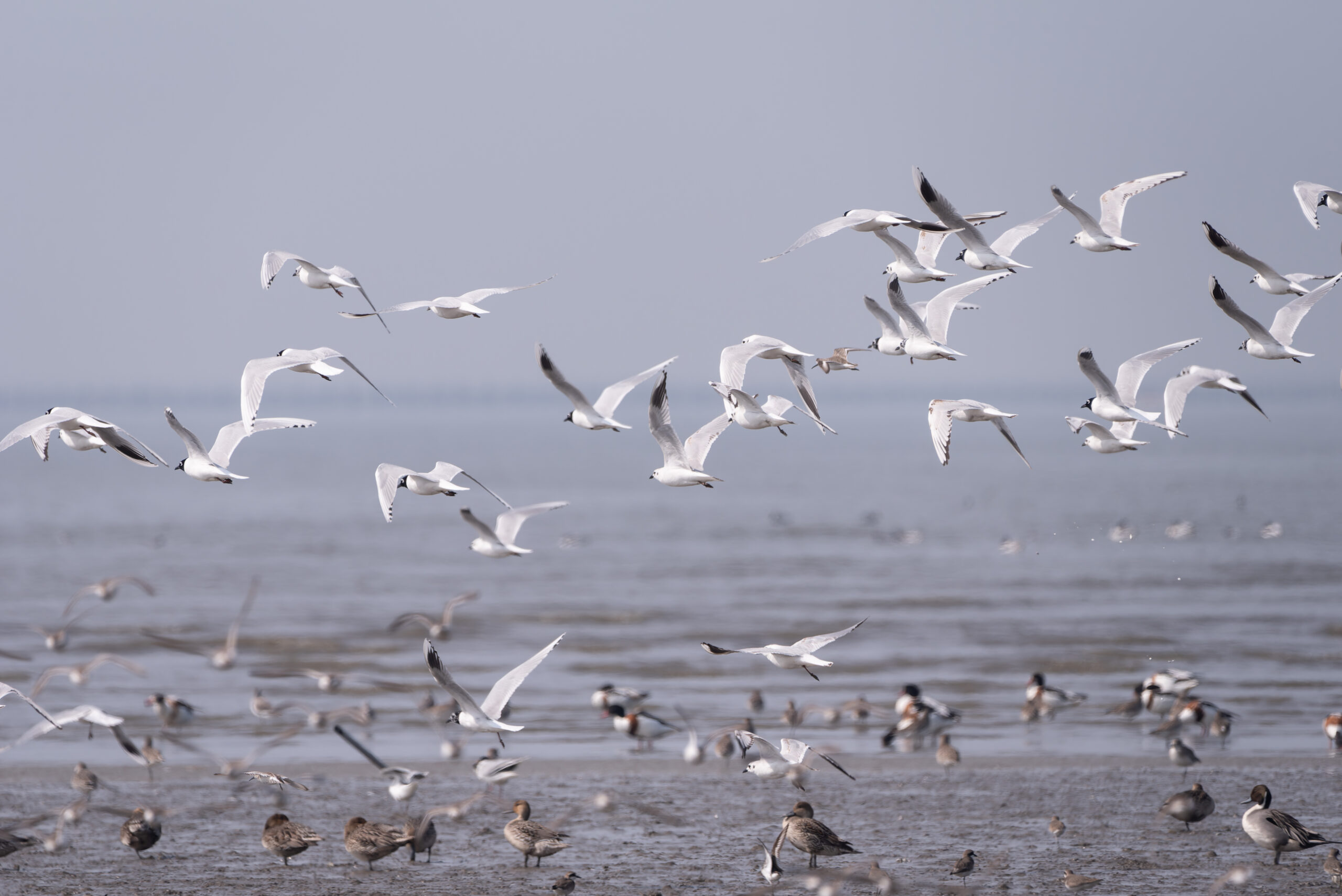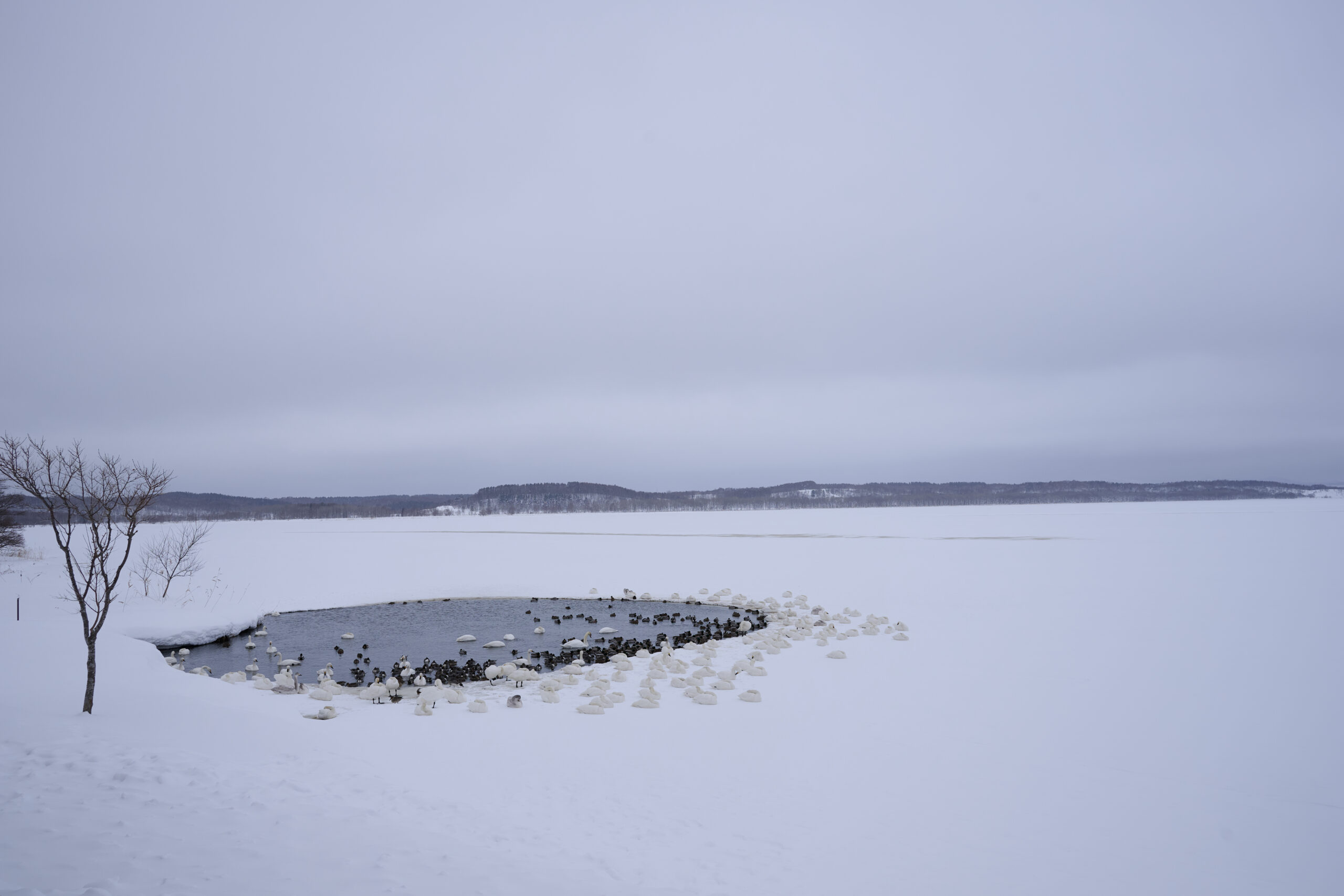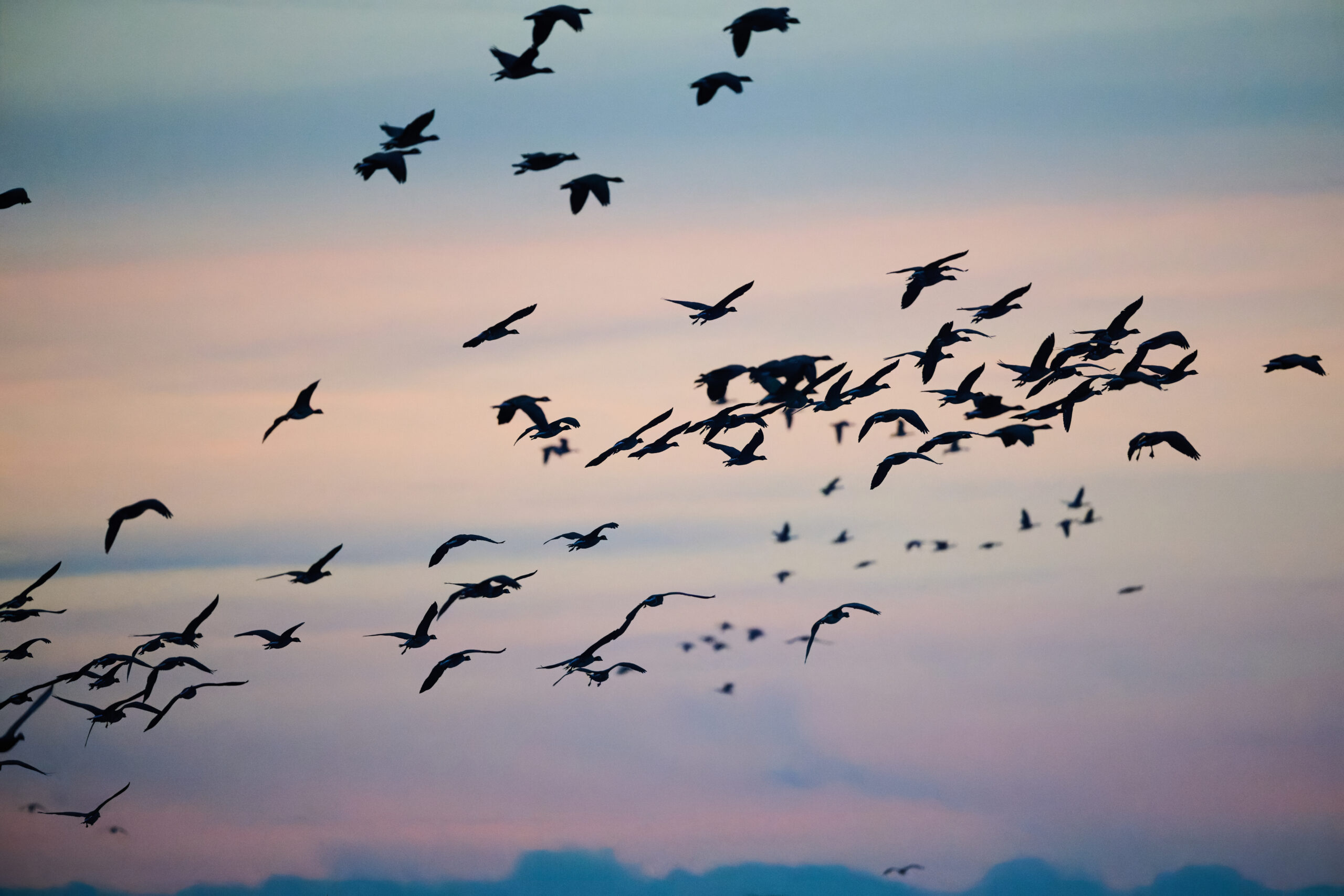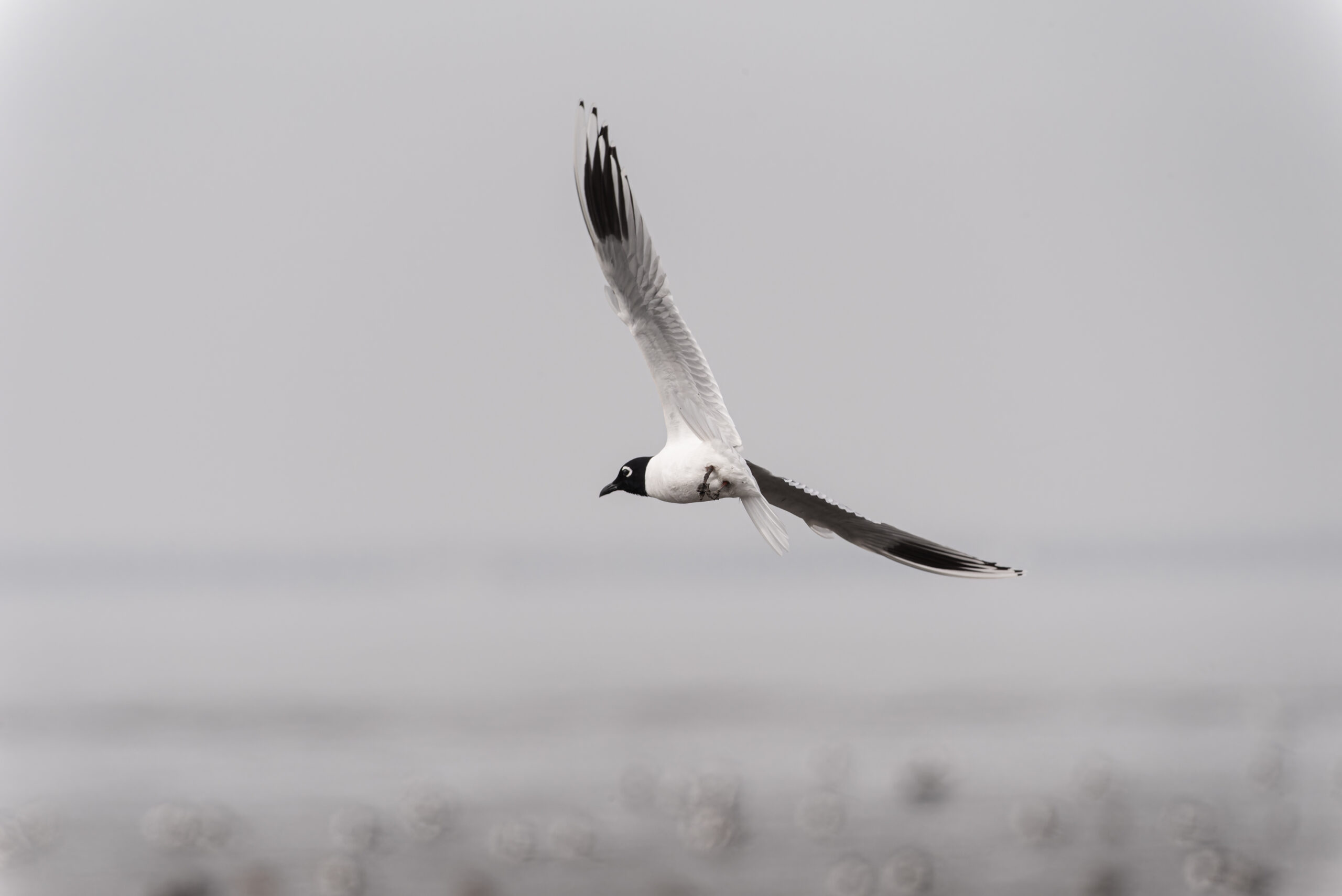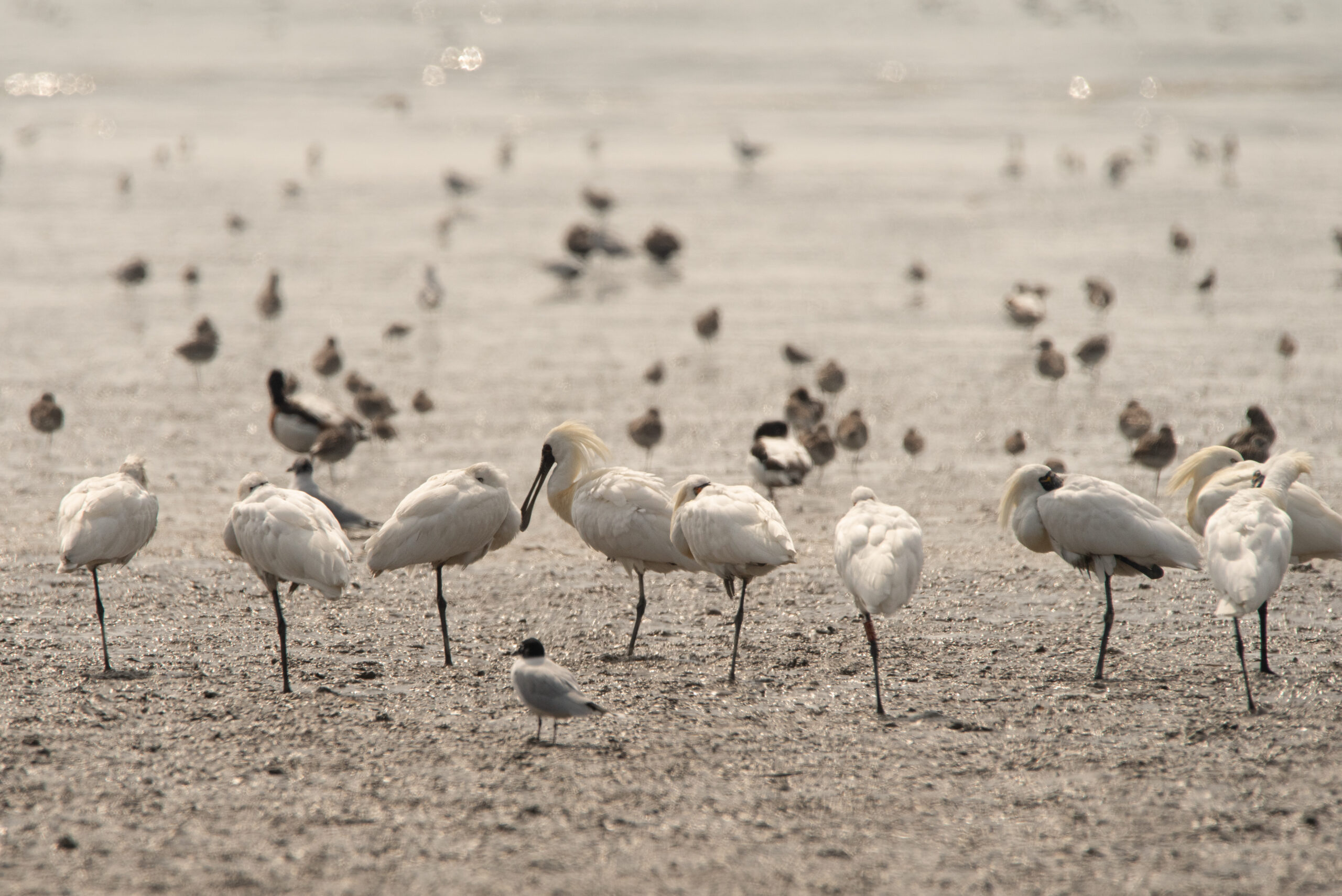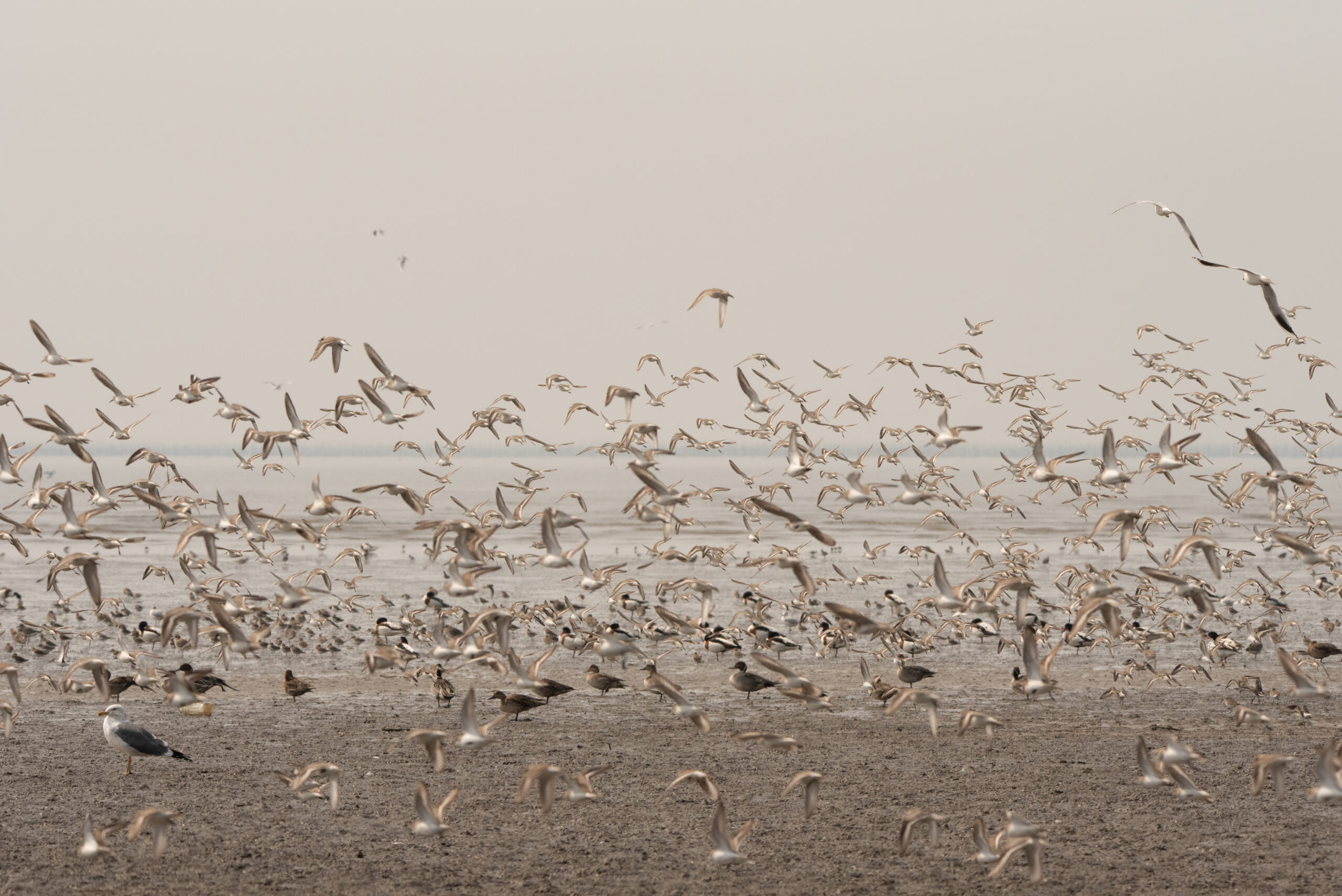この場所について
九州・有明海に面した干潟。 シギ・チドリの飛来数は日本一で、絶滅危惧種のクロツラヘラサギやシロチドリもよく観察される。 約170種の鳥類を観察することができます。 干満の差が日本一大きく、海岸から約5kmも干潟が広がっているので、干潮時よりも満潮時近くに来ないと鳥が遠くに行ってしまいます。 イソシギが多く、時折見られるつぶやきは必見の光景です。
観察できる代表的な鳥類
- シギ・チドリ類(クロツラヘラサギ、チュウシャクシギ、オオソリハシシギなど)
- カモメ類(ユリカモメなど)
- カモ類(シェルドレイクなど)
アクセス
- 住所:佐賀県佐賀市東与賀町佐賀県佐賀市東与賀町
- 飛行機で:佐賀国際空港から車で10分
- 電車:JR長崎本線佐賀駅より車で約30分
- 車:佐賀大和ICから車で約50分
- 基本的に車での移動が推奨されています。 ネイチャーセンターヒガサスには、217台収容できる駐車場があります。 ヒガサス駐車場から撮影ポイントまでは、徒歩5~10分程度です。 ただし、東与賀の干潟は広大で、気に入った場所を見つけるには歩き回らなければならないので、この駐車場はベストとは言えません。 駐車場は、干潟の前の土手が最適です。 土手には、車で乗り付けて駐車できるポイントがいくつかあります(下記地図参照)。
撮影場所とポイント
- 沖合からの構造は「干潟-柵-撮影できる場所(水深30~40m程度)-堤防-道路」となっており、多くの人が利用しています。 沖合からの構造は「干潟-柵-撮影できる場所(水深30~40m程度)-堤防-道路」で、多くの人が利用しています。鳥をアップで撮影したい場合は、600mm以上のレンズが必要です。 例えば、イソシギの囀りを長時間撮影したい場合は、200mm以下のレンズで撮影してください。
- 満潮の2時間前から満潮までの間、潮位が5m以上の時が最適です。 タイド情報はこちらで確認できます。
- 撮影場所の足元は整備されていますが、フェンス前は干潟のように泥だらけです(約50m間隔でコンクリート舗装されている箇所があります)。 50m程度の間隔)。 地元の方の話によると、大潮の時には撮影場所の半分まで潮が上がることもあるそうです。 この事実から、多くのフォトグラファーはラバーブーツを履いています。
- 撮影場所には日陰がないため、日焼け対策が必要です。 例えば、3月中旬に2日間、午前中だけの撮影でかなり日焼けしてしまったんです。
- 撮影場所の周辺は畑や田んぼで、お店はありません。
- 撮影場所には椅子がありません。 地面が汚れていた。 鳥は長い時間じっとしていることがあるので、折りたたみ式の椅子があるといいですね。
- 前述したように大潮で潮が満ちてくるので、撮影場所の地面は基本的にコンクリートの上に乾いた泥が乗っている状態です。
- 撮影可能なエリアは広大で、鳥自体も頻繁に場所を移動する。 フェンスの向こう側(干潟側)には草地もあるので、お気に入りの場所で鳥が来るのを待つもよし、軽装備で移動するもよしです。
- イソシギの鳴き声はとても壮観です。 東よか干潟の撮影は、満潮の前後2時間がベストと言われていますが、この行動もこの時間帯によく見られるそうです。 地元の人によると、満潮で足場が悪くなったときにもこの行動が見られることが多いそうです。 私が観察したところ、この行動は、他の鳥が同時に飛び立つときによく見られたものでした。 例えば、最初にクロテンカモメの群れが飛び立ち、しばらくしてイソシギの群れが飛び立つというように。 シギが飛び立つと、シェルドレイクなどの鳥の群れも飛び始め、シーンは鳥の飛翔の狂騒と化す。 鳥が落ち着くと、それまで落ち着いていた場所とは違う場所に降り立ち、景色が一変する。
- カモメやユリカモメは、よく下を向いて飛んでいますね。 これは、干潟で生き物(餌)を探しているためと思われます。 空中を飛行中、あるタイミングで急旋回し、墜落するかのように地面に着地することがある。 着地する場所を見れば、カニなどを捕獲している様子を観察・撮影することができます。

